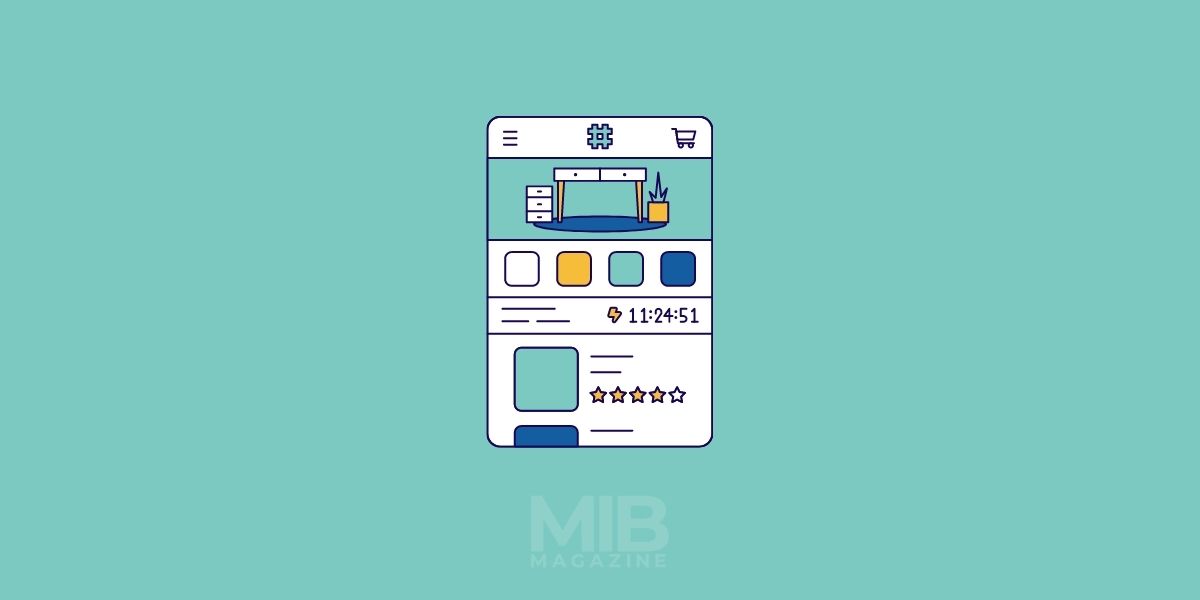Guide to Ecommerce Fraud Protection

It is a truth universally acknowledged that eCommerce fraud, in any form, is a threat to both merchants and customers. For over three decades, the risk of fraudulent activity in online transactions has been a problem.
With the rise in technology and digital software being integrated into our daily lives comes an increase in non-face-to-face transactions, making them more vulnerable to attack. There are no physical rules governing electronic exchanges. This is important to remember when considering the implications of fraud risks on eCommerce sites.
In this article, we will be going over how merchants can prevent and fight against various types of eCommerce fraud and discuss common scams and tips for shoppers to stay protected while shopping online.
Ecommerce Fraud Protection Basics
Setting Strong Password Requirements
Passwords are a crucial part of online transactions and can go a long way towards protecting your business from fraudulent activity. Set password requirements to help identify fake customer accounts or stolen credit card numbers. A good starting point is to include both upper and lowercase letters and at least one number in the password.
Also, avoid common keyboard patterns such as qwertyuiop which can be easily guessed by fraudsters who have hacked user profiles elsewhere on the web, another vital rule to adhere to when setting up passwords.
Following PCI Standards
See that you follow PCI standards to prevent your eCommerce site from being held responsible for security breaches. There are three levels of validation depending on how much risk is involved with processing transactions, and they range from low (Level 1), medium (level 2), to high (Level 3).
To know whether or not Data Security Standards are met or exceeded for each level, strict audits must be conducted regularly.
These standards will help ensure that the systems put in place by merchants meet specific criteria set out by industry leaders such as American Express and Visa. Along with major payment brands, they issue rules for merchants to follow.
Addressing Verification System
To combat much of the risk associated with E-Commerce fraud, you must choose an appropriate payment solution for your business, one which offers effective methods to verify the authenticity of customers’ billing information (such as name, address, credit card number, etc.) before processing their payments.
Although there are many options available to merchants today, one of the most widely used is ‘Verified by Visa’, which requires customers to provide their bank information to verify identity.
Fraud Types on Ecommerce
Interception Fraud
Interception fraud occurs when a lot of the same information is used to make bogus transactions. For example, if one person has their card number and password stolen and used to make purchases elsewhere, the thief will likely purchase items at various places to avoid suspicion.
Interception fraud differs from triangulation fraud in that information sharing occurs across multiple eCommerce sites instead of just one.
Account Takeover Fraud
Account takeover can be defined as an attack on an account that allows for unauthorised transfers. It may also involve stealing full access to online accounts, enabling criminals to control login credentials. Social engineering usually precedes account takeovers, and victims who have lost control of their email accounts are at greater risk.
Account takeovers usually result in business data loss, leading to financial losses. The hacker’s information shared with different eCommerce sites makes interception fraud possible.
Triangulation Fraud
With 3D Secure (3DS), an eCommerce standard for online security known as Verified by VISA or MasterCard SecureCode, customers are offered the option of setting up a password to protect their accounts. If this password is not set, they will be asked to create one via SMS verification before completing payments.
This is done to ensure that accessor card information matches the billing information on file. However, if more than one account has been opened under different names but all with the same physical credit card data through it, then there is a good chance that triangulation fraud may take place.
Fraud Tips For Ecommerce Merchants
Create Personalised Policies
Even though you may be offering a free trial period to entice new customers to try out your product, they may still face charges for failing to cancel their subscriptions in time.
There are different ways for you to handle this situation so that people remain loyal customers despite having signed up for a free trial, or they may even end up paying the total price after the trial period ends.
For example, you can inform new subs that they will be charged once the free trial expires. This is one of the most common approaches used by subscription-based companies like Netflix.
Train your Customer Support
Fraudsters often use denial of service and social engineering to trick unsuspecting customers into handing over their credit card details. To prevent this from happening, educate your customer support team about the signs of fraud so that they can avoid falling prey to such tactics.
This will help save them from losing credibility with paying customers while safeguarding your business against negative press reports. For example, watch out for people who call or email asking for card information because it may mean that someone is trying to take over an account to make purchases under another person’s name.
Review All Orders Manually
A manual review is an excellent anti-fraud measure because it helps ensure customer satisfaction while allowing employees to focus on proactive activities instead of taking care of returns and refunds simultaneously. No matter what happens, make sure to keep track of all the orders returned or exchanged.
Fraudsters often prey on companies that offer free return shipping by mailing back used or low-value items to get a refund while also pocketing your valuable products for themselves.
Be Ready for the Holiday Season!
The holiday season is one of the busiest times because people receive their bonuses and spend more money shopping than during other months.
However, this could also be a dangerous time since cybercriminals often take advantage of people by tricking them into visiting phishing pages or sharing sensitive information on compromised websites via social engineering tactics, as these sites may look exactly like the real deal.
You can also help protect your customers by adding two-factor authentication to your eCommerce system so that they aren’t required to reveal their passwords when they log in from an unapproved device.
Get a Trusted Ecommerce Solution
Many eCommerce platforms are available today, so do some research before deciding which one best suits your business needs. For example, if you are looking for an effective way to avoid account takeover fraud, Shopify has got you covered since it offers two-factor authentication along with password recovery tools.
This means you will have added security measurements in place even when someone else obtains your login credentials.
The best part is that Shopify’s eCommerce solutions are designed to work perfectly across multiple devices instead of forcing you to use an entirely different platform every time you switch from your laptop to your smartphone or tablet, which can be rather inconvenient for online shoppers.
Tips for Online Shoppers:
Keep track of the URL of the website you visit and always verify its HTTPS status before submitting personal information or payment details. Even if you’re shopping on a reputable site, do not allow any third-party applications such as browser plugins and add-ons to access your sensitive data because these can be easily compromised.
Finally, make sure to read through the privacy policy before giving away more information than necessary about yourself. The more you know, the better!
Conclusion
To avoid being a victim of eCommerce fraud, you need to put in place stringent policies and effective anti-fraud measures so that your business can enjoy continued growth without interruption.
Described above are some tips that may come in handy during the holiday season, but if you’re looking for additional help, it would be best to ask for assistance from an established eCommerce solution provider. Good luck!
FAQs
Ecommerce fraud protection is a set of preventive measures taken to protect ecommerce businesses from fraudulent activities such as credit card fraud and identity theft. These measures involve using technology such as data encryption, fraud detection software, and customer authentication to protect businesses and their customers.
Ecommerce businesses can be vulnerable to a variety of frauds, including credit card fraud, identity theft, phishing scams, malware attacks, and more.
Best practices for ecommerce fraud protection include implementing strong data encryption, performing regular security audits, utilizing fraud detection software, monitoring customer activity, and authenticating customers.
Data encryption helps protect your ecommerce business by encoding sensitive data so that it is unreadable to unauthorized parties. This helps prevent data breaches and other malicious activities.
Fraud detection software and customer authentication help protect your ecommerce business by monitoring customer activity and verifying customer identities to ensure that fraudulent activity is detected and prevented.
Not taking ecommerce fraud protection measures can have serious consequences, including loss of customer trust, financial losses, and reputational damage.
To protect your ecommerce business, you should take steps such as implementing strong data encryption, performing regular security audits, utilizing fraud detection software, monitoring customer activity, and authenticating customers.






